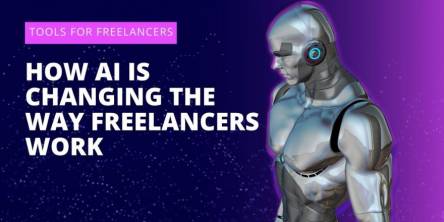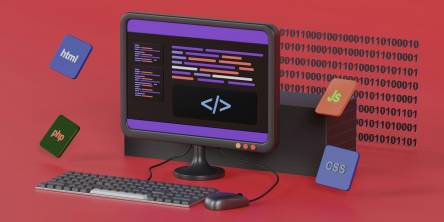The Rise of Face Swap Apps: Fun, Trends, and Privacy Concerns

Face swap technology has taken the digital world by storm, transforming the way people engage with photos and videos. What started as a simple, fun filter has evolved into a sophisticated tool powered by artificial intelligence (AI), enabling users to swap faces with celebrities, friends, or even fictional characters in seconds. Apps like Snapchat, FaceApp, Reface, and Zao have gained massive popularity, but their rise hasn’t been without controversy.
This article explores the fun side of face swap apps, the latest trends driving their popularity, and the growing privacy concerns surrounding their use.
The Fun Side of Face Swap Apps
Face swap apps are primarily known for their entertainment value. They allow users to:
- Swap faces with friends or family for hilarious results.
- Morph into celebrities (e.g., seeing yourself as a movie star or historical figure).
- Gender-swap filters that show users what they’d look like as the opposite gender.
- Age progression/regression features, letting people visualize themselves older or younger.
- Meme and viral content creation, fueling trends on TikTok, Instagram, and other platforms.
Apps like Reface and FaceApp use deep learning algorithms to create seamless swaps, making the results eerily realistic. Social media challenges, such as the "Bold Glamour" filter on TikTok or the "AI Time Machine" trend, have further boosted engagement, with millions of users participating daily.
Read more: AI-Powered Chatbots: The Future of Customer Support and Lead Generation
Current Trends in Face Swapping
1. AI-Powered Realism
Earlier face swaps were often glitchy and comical, but advancements in generative adversarial networks (GANs) now produce hyper-realistic results. Apps like Deep Nostalgia (by MyHeritage) animate old photos, while Zao (a Chinese app) lets users insert their faces into movie scenes convincingly.
2. Celebrity and Pop Culture Integration
Many apps collaborate with entertainment franchises, allowing users to face-swap with characters from Marvel, Star Wars, or Stranger Things. This boosts engagement and keeps the trend fresh.
You May Also Like: AI Video Detector - An Utmost Solution to Detect Fraudsters
3. Video Face Swapping
Beyond static images, apps now support real-time video swaps, making it possible to "become" someone else in videos. This has fueled trends like deepfake parodies and funny dubbed clips. If you're curious to try professional-grade video face swapping yourself, check out VidMage video face swap, a web-based AI platform that delivers fast, realistic swaps for both pre-recorded videos and live streams.
4. Augmented Reality (AR) Filters
Snapchat and Instagram lead the way with AR-powered face swaps, enabling interactive filters that respond to facial movements in real time.
5. Rise of Deepfake Concerns
While most face swaps are harmless, the same technology can be misused for deepfake scams, fake news, and non-consensual imagery, raising ethical debates.
Privacy Concerns and Risks
Despite their fun appeal, face swap apps have sparked serious privacy concerns:
1. Data Collection and Ownership
Many apps store uploaded images on their servers, sometimes indefinitely. FaceApp, for instance, faced backlash when reports suggested it retained users' photos without clear consent.
2. Facial Recognition and Biometric Data
Some apps may extract facial recognition data, which could be sold to third parties or used for unauthorized surveillance. In some regions, laws like GDPR (EU) and CCPA (California) regulate biometric data, but enforcement remains inconsistent.
3. Deepfake Misuse
Malicious actors can exploit face swap tech to create fake pornographic content, financial fraud (voice + face cloning scams), or political disinformation.
4. Lack of Transparency
Many apps have vague terms of service, leaving users unaware of how their data is processed. Some free apps monetize by selling data to advertisers.
5. Security Vulnerabilities
Hackers have targeted face swap apps to steal personal data. In 2020, Snapchat’s "My AI" feature raised concerns over potential misuse of private images.
How to Stay Safe While Using Face Swap Apps
To enjoy face swapping without compromising privacy:
- Use trusted apps with clear privacy policies (e.g., Snapchat, Apple’s Memoji).
- Avoid uploading sensitive photos (e.g., IDs, private moments).
- Check app permissions—disable unnecessary access to your camera roll or contacts.
- Delete photos from the app after use if possible.
- Be cautious of deepfakes—verify suspicious videos before sharing.
Conclusion
Face swap apps offer endless entertainment, but their rapid advancement comes with risks. While AI-driven filters and deepfake technology continue to evolve, so do concerns over privacy, consent, and misuse. As users, staying informed and cautious can help us enjoy the fun side of face swapping while minimizing potential dangers.
Will face swap tech become more regulated, or will innovation outpace security? Only time will tell—but for now, swapping faces remains a double-edged sword of amusement and apprehension.
Similar Articles
Bring still images to life with make a photo talk AI tools. Learn how to create a natural AI talking avatar using Media.io's powerful audio-video models and templates.
AI agents are no longer an experiment in financial institutions. They are becoming the operational engine that powers real time decisioning, proactive fraud defense, precise risk scoring, and automated compliance workflows.
Banks are facing a moment of truth. Customer expectations are rising faster than most institutions can reshape their operating models.
How AI SDRs turn first contact into booked meetings with smart outreach strategies in this step-by-step journey breakdown.
How AI is transforming freelancing by boosting productivity, streamlining tasks, and reshaping the future of independent work.
AI chatbots are reshaping scam prevention with real-time detection, deepfake defense, and personalized protection against cybercriminals.
When I first started working in branding, creating a logo was a long and expensive process. Ordering from a designer required weeks of discussions and a budget that small businesses often couldn’t afford.
Generative AI is not just another addition to the toolbox of products; it will soon serve as the co-pilot for the entire lifecycle process, including discovery and delivery.
Learn how AI code generation speeds up software development by reducing repetitive tasks, improving code quality, and supporting Agile and DevOps teams.









